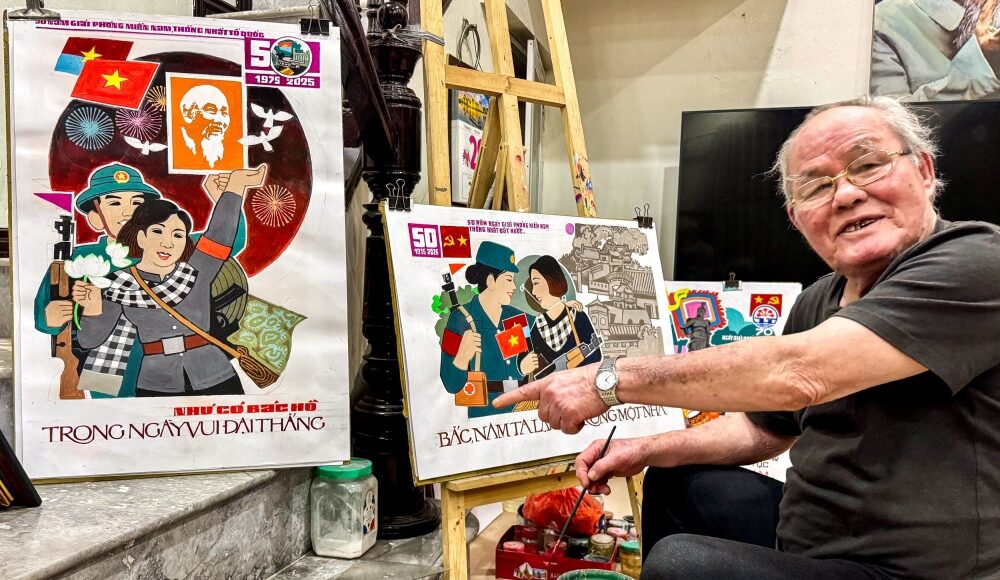HANOI, April 30 — Much has changed in Vietnamese life in the 50 years since the end of the Vietnam War. The streets of the once-impoverished country now bustle with commerce and young people carry the latest iPhones and sing along to Taylor Swift songs.
But one constant remains: the ubiquitous propaganda art of the ruling Communist Party.
At 82, artist Tran Duy Truc has seen almost all of it. During the war, he painted posters to rally the troops and inspire North Vietnamese citizens, and continued to do so for the next 60 years.
Now one of the oldest living wartime artists, he is proud to have been commissioned to paint four new works to commemorate the anniversary of the end of the war.
“This isn’t my first time creating such art, but the 50th anniversary is special. I feel deeply moved and excited,” Truc said.
On April 30, 1975, communist North Vietnam seized control of Saigon, the capital of US-backed South Vietnam. The victory ended two decades of war that killed some 3 million Vietnamese from both sides and also nearly 60,000 Americans.
More than one million Vietnamese fled the country after the war ended for fear of possible retaliation and economic hardship.
One of Truc’s anniversary posters features two female soldiers embracing — one in the uniform of the North, the other in the black that was typical of the South.
“North and South, we are reunited in one home,” it reads in Vietnamese.
In the 1960s, Vietnam’s wartime communist propaganda art — with its colourful but concise slogans — served as a powerful tool to promote ideas and inspire devotion to the cause.
Today, it continues to flourish, visible on rooftops, street corners, billboards and in government offices. The style has even been transferred to T-shirts and coffee mugs that are popular with foreign tourists.
A billboard displayed ahead of the 50th Anniversary of the fall of Saigon. — Reuters pic
‘It’s not just art’
In his studio, where he also sleeps, Truc is surrounded by some 500 pieces of art commemorating various state occasions.
The style of Vietnamese propaganda — vibrant colours typically depicting patriotic men and women exhorting their compatriots with pithy slogans — has changed little over the decades.
“I wasn’t enlisted to fight (in the war), but I believe I can still wield my brush to convey messages,” Truc said.
“Artists are soldiers, not on the battlefield but on the cultural front,” he added.
Truc fondly recalls seeing his paintings displayed on the rooftops of government offices on the day Saigon fell.
He’s among a number of artists commissioned for the 50th anniversary, and each piece conveys a distinct message.
“Hello, spring victory!” is among the most common.
Another invokes Ho Chi Minh, communist Vietnam’s founder and first leader: “If only Uncle Ho were with us on the joyful day of the great victory!”
Truc is already busy painting posters for the Communist Party Congress expected to be held in January next year.
“It’s not just art. It’s history and patriotism,” he said. — Reuters





